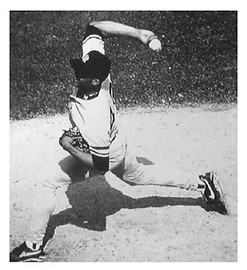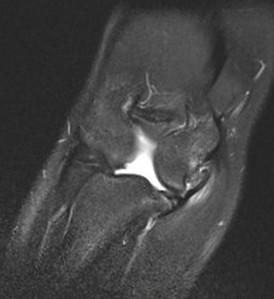Orthopaedic Surgeon
What is elbow instability?
The elbow is comprised of three bones: the humerus (upper arm bone), and the radius and ulna (forearm bones). Ligaments are connective tissue that help provide stability about the elbow. The ligaments are considered static stabilizers along with the bony articulation of the joint. The surrounding muscles provide dynamic stability to the joint when they contract. Elbow instability, therefore, is when these structures can no longer keep the joint together with activities that stress the joint.
What causes elbow instability?
Elbow instability can be caused by acute trauma or chronic repetitive activities. We typically see elbow instability in patients that acutely dislocate their elbow. A less common mechanism is chronic attenuation of the ligaments leading to instability. This is most commonly seen in overhead athletes.
Elite baseball pitchers can produce an internal rotation velocity of 7,000 degrees per second. This is the fastest recorded motion by the human body and places high forces across the elbow joint. With repetitive high velocity movements of the arm, the elbow experiences significant wear. These forces wear on the ligament until the supporting ligaments are torn or damaged leading to instability.
How is elbow instability treated?
Elbow instability can be treated conservatively with physical therapy to strengthen the muscles around the elbow. The patient can also use a special hinged brace and activity modification to allow the tissues around the elbow to heal.
For patient's with a symptomatic elbow that still limits their ability to function, we may indicate them for surgery. Repairing the damaged ligaments is not usually an option given the high failure rates. The tissue usually needs to be reconstructed with a graft tissue. This involves using your own tissue as an autograft or an allograft tissue to reconstruct the ligament. The common surgical technique is known as the Tommy John procedure and was named after the LA Dodgers pitcher that underwent the first procedure in 1974.
A video demonstrating a Tommy John surgery can be found here.
Elbow Instability

It takes approximately 1 year to recover from a Tommy John procedure. If you have surgery, you will work closely with physical therapy to follow our rehabilitation program. They will also help with a return-to-play throwing program.
This image, on the left, demonstrates an autograft reconstruction of the medial elbow ligaments. This is a basic representation of the Tommy John reconstruction procedure.
Image courtesy of Elsevier Inc.



This MRI image has an arrow that points to the torn medial ligament in the elbow. This ligament is involved in medial elbow instability.
This MRI image has an arrow that points to the torn medial ligament in the elbow. This ligament is involved in medial elbow instability.
References
1. Bruce JR, Andrews JR. Ulnar Collateral Ligament Injuries in the Throwing Athlete. Journal of the American Academy of Orthopaedic Surgeons. 2014;22(5):315-325. doi:10.5435/JAAOS-22-05-315.
2. Skelley, N.W., Oh, L. Lateral: Posterolateral Rotatory Instability. In Shoulder and Elbow Injuries in Athletes: Prevention, Treatment, and Return to Sport. Elsevier. 2017.
